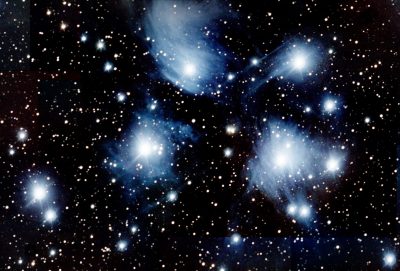Reprinted from the Island Free Press
As January starts, the constellation Orion will be visible near the eastern horizon as the skies get dark. This is a good opportunity to look for M42, the Orion Nebula, with no telescope required.
Supporter Spotlight
At magnitude +4, the Orion Nebula is pretty easy to see on a clear winter’s night. The nebula will appear as a fuzzy area around the second star in the sword of Orion.
After you spot it with the unaided eye, try locating it through a pair of binoculars. You’ll be amazed at how much detail will stand out. Now go one step further and view it through a telescope. This sky gem just gets better and better.

January also begins with Mars and Venus visible in the southwest at sunset. If the skies are clear and you have access to a telescope or binoculars, you should be able to see Neptune and Mars simultaneously. The two are in conjunction on Jan. 1, 2017.
If you stay up – and can stand up – after your New Year’s Eve celebration, you will be able to see Jupiter rise in the east around 1:15 a.m. Saturn will rise at 6:02 in the morning, so drink a lot of coffee and you might get a good view of it, too.
The Quadrantids meteor shower will be visible on the morning of Jan. 4. The peak action is scheduled for 9 a.m. on the East Coast, but you might see as many as 20 to 30 shooting stars per hour if you are up an hour or two before dawn. On the West Coast and in Hawaii, skywatchers might see as many as 120 to 130 per hour.
Supporter Spotlight
The shooting stars will originate from the constellation Bootes. You can find Bootes by looking for the Big Dipper and then following the arc of its handle to the bright, red giant star Arcturus. It’s the brightest star in Bootes.
December Highlights
In my October article, I mentioned the Pleiades, or M45. It’s a tight cluster of stars you can use to check your vision. There are six prominent stars that are readily visible with the unaided eye. Under very dark, good conditions, you might be able to spot more. Johann Kepler reported 14 in the 17th century.

M45 is a fairly small constellation to the unaided eye, but it’s pretty big through a telescope. When using my big scope, I can only get one or two of the brighter stars in the frame at a time. So, I learned a new technique for creating this image. It’s a mosaic of 16 overlapping tiles. Sounds straightforward, but it took three attempts to get the right spacing for the individual tiles. Each tile is composed of 15 20-second exposures, for a grand total of 240 images requiring about 80 minutes of exposure time.
You might notice that the nebulosity around the star is blue where the predominant color in most nebulae is red. That’s because M45 is a reflection nebula. Clouds of interstellar dust reflect the light from nearby stars, and blue light just happens to reflect better than red light.
Moon Phases
- First Quarter: Jan. 5
- Full moon: Jan. 12
- Last Quarter: Jan.19
- New moon: Jan. 27
This story is provided courtesy of the Island Free Press, a digital newspaper covering Hatteras and Ocracoke islands. Coastal Review Online is partnering with the Free Press to provide readers with more environmental and lifestyle stories of interest along our coast. You can read other stories about Hatteras and Ocracoke here.








